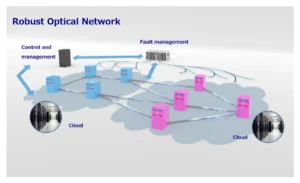In today’s hyper-connected digital world, network security isn’t optional—it’s essential. Businesses, agencies, and individual users face a constantly evolving threat landscape, from ransomware and phishing to DDoS attacks and insider threats. Whether you’re managing an enterprise-class infrastructure or a small local network, the stakes are high: data breaches, operational disruptions, reputation damage, and compliance penalties.
NetShield OSP stands at the forefront of comprehensive, multi-layered network defense. In this in-depth guide, we’ll walk you through best practices, security frameworks, key technologies, and actionable strategies to fortify your network and ensure uninterrupted performance. Expect real-world advice, technical clarity, and clear steps you can implement immediately.![]()

1. Understanding Network Threats: The Foundation of Prevention
To build effective protection, you need to know what you’re protecting against:
-
Malware & Ransomware: Malicious software designed to infiltrate and compromise systems.
-
Phishing & Social Engineering: Attacks that prey on human error—enticing users to reveal credentials or click unsafe links.
-
Denial of Service (DoS/DDoS): Volume-based attacks that aim to bring down services and networks by overwhelming them.
-
Insider Threats: Unauthorized access or misuse of privileged data by internal employees or contractors.
-
Zero-Day Attacks: Exploits that target unknown or unpatched vulnerabilities.
Each threat requires a nuanced defense strategy—from perimeter safeguards to user education and incident detection systems.
2. Core Pillars of Network Security
A well-rounded strategy relies on reinforcing several key pillars:
🔹 A. Perimeter Defense & Firewalls
Acting as gatekeepers, firewalls filter incoming and outgoing traffic based on defined rules. NetShield OSP offers next-gen firewalls that go deeper—inspecting traffic at the application layer, blocking intrusions, and enforcing protocol-level security across networks.
🔹 B. Intrusion Detection & Prevention (IDS/IPS)
These systems monitor network behavior and detect anomalies or malicious patterns. If suspicious activity arises—such as exploit signatures or data exfiltration attempts—NetShield OSP’s IDS/IPS can alert admins or automatically block traffic in real time, minimizing risk.
🔹 C. Secure Access Control & Identity Management
Strong authentication mechanisms—like Multi-Factor Authentication (MFA)—verify users before granting access. Role-based access control (RBAC) ensures individuals only see necessary data, reducing exposure.
🔹 D. Secure Remote Access & VPNs
Remote work is now mainstream, making encrypted VPN tunnels essential. NetShield OSP’s SSL and IPSec VPNs provide flexible, secure remote connectivity with centralized control and visibility.
🔹 E. Endpoint Security & Zero Trust
Modern security assumes breaches are inevitable. NetShield OSP extends defense to every device and user through endpoint agents, micro-segmentation, and continuous verification—embodying a Zero-Trust security model.
🔹 F. Network Visibility & Monitoring
UNified logging, real-time monitoring, and SIEM integrations give deep insight into traffic flows, suspicious events, and compliance posture. NetShield OSP’s dashboard offers customizable alerts, forensic investigation tools, and real-time reporting.
🔹 G. Threat Intelligence & Automated Updates
Stay ahead with threat intelligence feeds that deliver the latest indicators of compromise. Automatic signature and firmware updates ensure your security stack remains resilient against emerging threats.
3. Building a Bulletproof Network Security Strategy
Step 1: Assess Your Security Posture
Begin with a thorough security audit. Analyze network architecture, map assets, check patch levels, and identify attack surfaces. NetShield OSP’s assessment tools help uncover hidden vulnerabilities and compliance gaps.
Step 2: Design Multi-Layered Protection
Use the concept of defense-in-depth: combine perimeter firewalls, IDS/IPS, endpoint security, and secure authentication. Redundancy is key—pen testing and vulnerability scanning validate configurations and reveal weaknesses.
Step 3: Implement Secure Policies & Version Control
Write clear security policies: password complexity, login timeouts, session recording, etc. Maintain version control of configurations and ensure all changes are tracked and auditable.
Step 4: Train Your Workforce
People are often the weakest link. Conduct phishing simulations, security awareness training, and incident response exercises. NetShield OSP resources include user-friendly guides and best practices.
Step 5: Monitor & Respond
Deploy continuous monitoring tools. Real-time alerts trigger rapid action on anomalies. Create verification protocols, maintain backups, and practice patch management.
Step 6: Review, Refine, Repeat
Security isn’t a one-time project. Quarterly reviews, biannual red-team exercises, and compliance audits are critical. NetShield OSP makes iteration easy, with data dashboards and trending analytics.
4. NetShield OSP Solutions: Tailored for Every Environment
✔️ All-in-One Network Security Appliances
From branch offices to data centers, NetShield OSP appliances combine firewall, IDS/IPS, VPN, and key management features. Their modular design allows seamless scaling to match growth.
✔️ Cloud-Native & Hybrid Solutions
Securing virtual networks across AWS, Azure, or multi-cloud environments is vital. NetShield OSP covers VPC security, workload protection, and secure connectivity through hybrid VPN tunnels and micro-segmentation.
✔️ Advanced DDoS Mitigation
Designed to detect and deflect volumetric and application-layer DDoS attacks, NetShield OSP keeps your critical infrastructure online even under heavy traffic.
✔️ Secure SD-WAN
Integrating security with SD-WAN optimizes global connectivity—intelligent routing, tunneling, and centralized policy enforcement ensure performance and protection on every LAN and WAN link.
5. Best Practices: Top Tips to Strengthen Security Immediately
-
Enforce MFA Everywhere
No exceptions: email, VPNs, admin panels—all access protected by two-step authentication. -
Segment Your Network
Isolate key resources. Never let attacker access escalate from administrative DSLs to core databases. -
Encrypt End-to-End
Use TLS/SSL and IPsec on all traffic: internal, external, between datacenters, and cloud. -
Automate Patch Management
Daily updates across OS, firmware, apps, and third-party code. Unpatched systems are doors left wide open. -
Backup & Disaster Recovery
Regular encrypted backups with off-site copies. Test restore plans yearly. -
Keep Logs for Forensics
Centralize and retain logs for at least one year. In the event of an incident, it’s your roadmap.
6. Case Studies: Real-World Success with NetShield OSP
A. Financial Services
A mid-sized bank faced daily phishing threats targeting internal users. By deploying NetShield OSP’s perimeter firewall and IPS, combined with phishing simulations and MFA, the bank reduced successful phishing attempts by 90% within six months.
B. Distributed Manufacturing
A manufacturing firm with 30 global facilities needed secure remote access to PLCs and control systems. NetShield OSP’s SD-WAN and VPN solution enabled seamless, encrypted connectivity—cutting latency by 40% and eliminating auditable configuration drift.
Conclusion: Your Roadmap to Network Peace of Mind
From core firewalls and intrusion detection to holistic monitoring and cloud-native deployments, NetShield OSP offers a scalable, intelligent platform. A strong strategy combines technology with process—assessment, layered architecture, user training, real-time insight, and regular audits. Don’t wait for a breach. Act now.
🔍 Ready to lock down your network?
Explore our product catalog, request a live demo, or schedule a free security assessment with our experts today.
Further Resources & References
-
Learn more about perimeter firewalls and next-gen IDS/IPS.
-
Download our whitepaper: Implementing Zero-Trust in Small and Medium Networks.
-
Explore our community forum for user stories and deployment guides.
